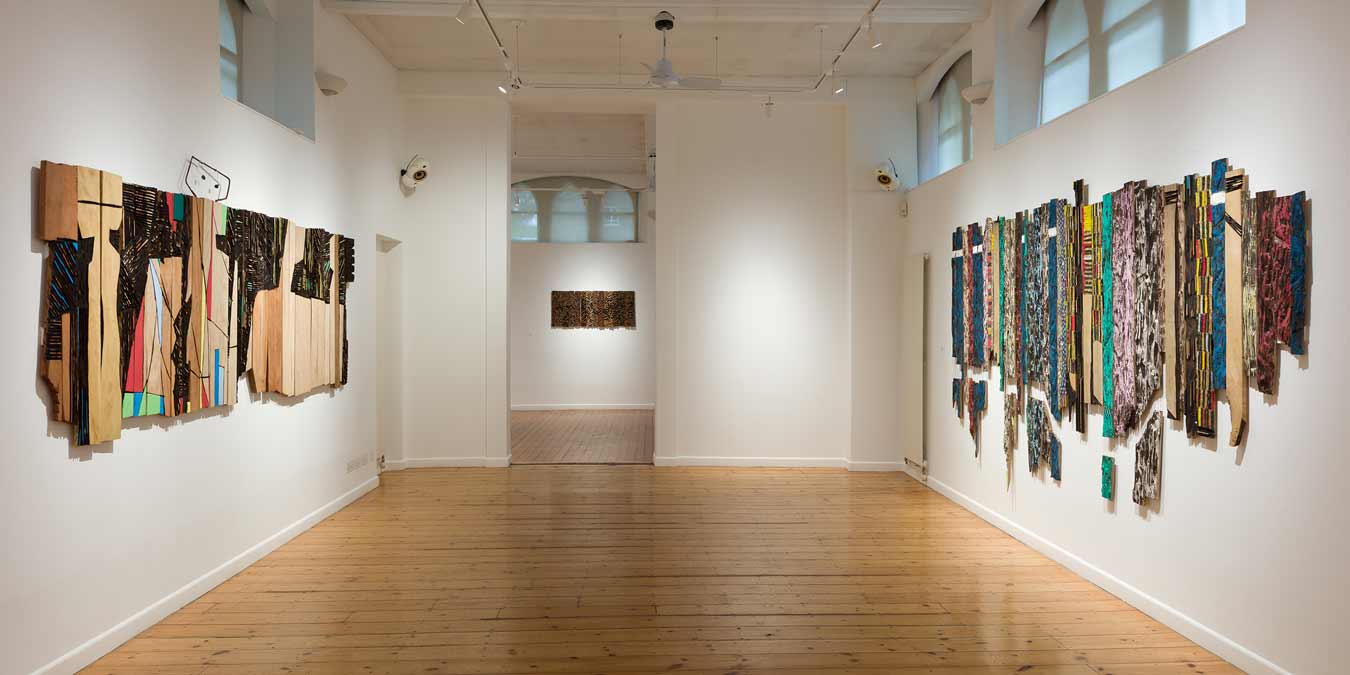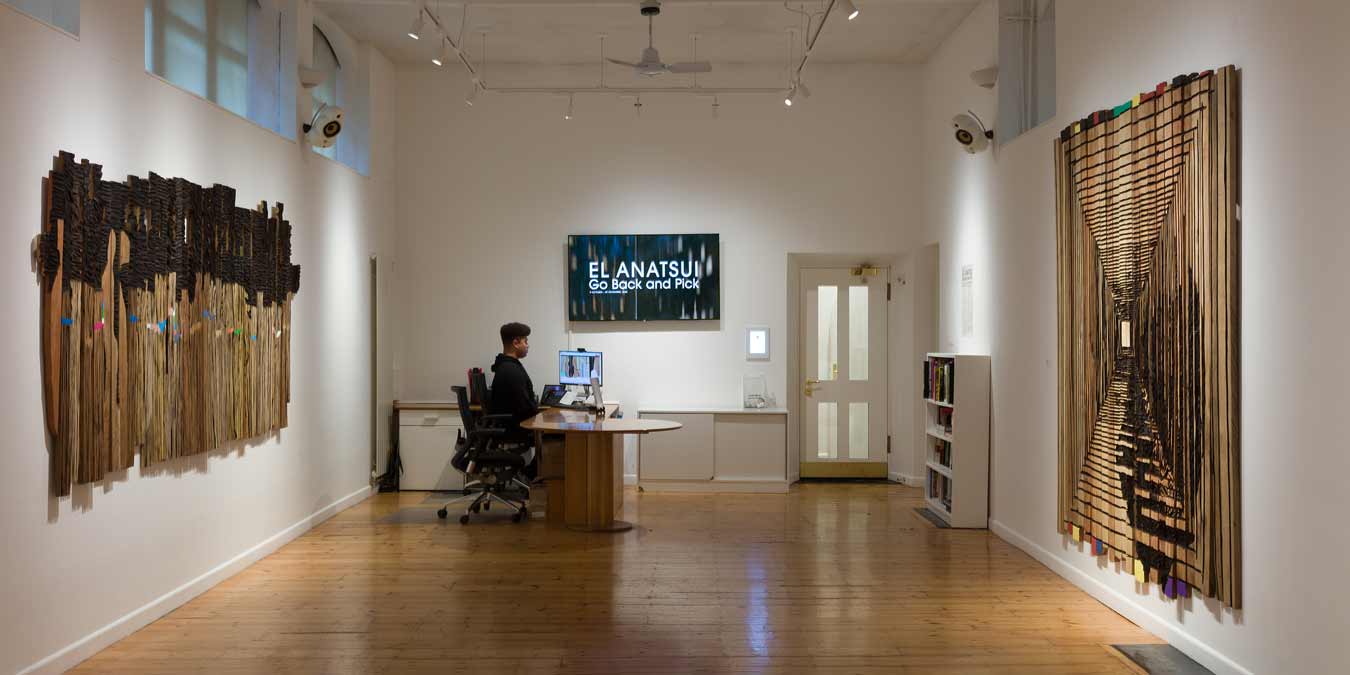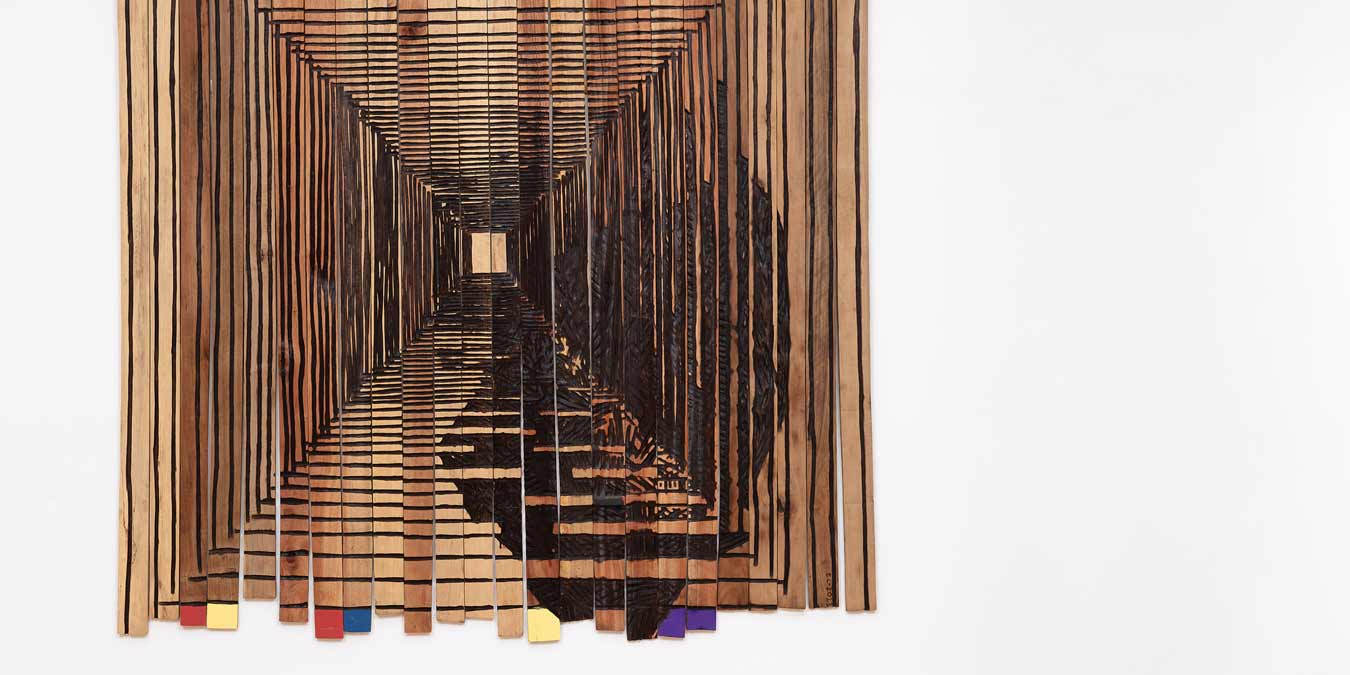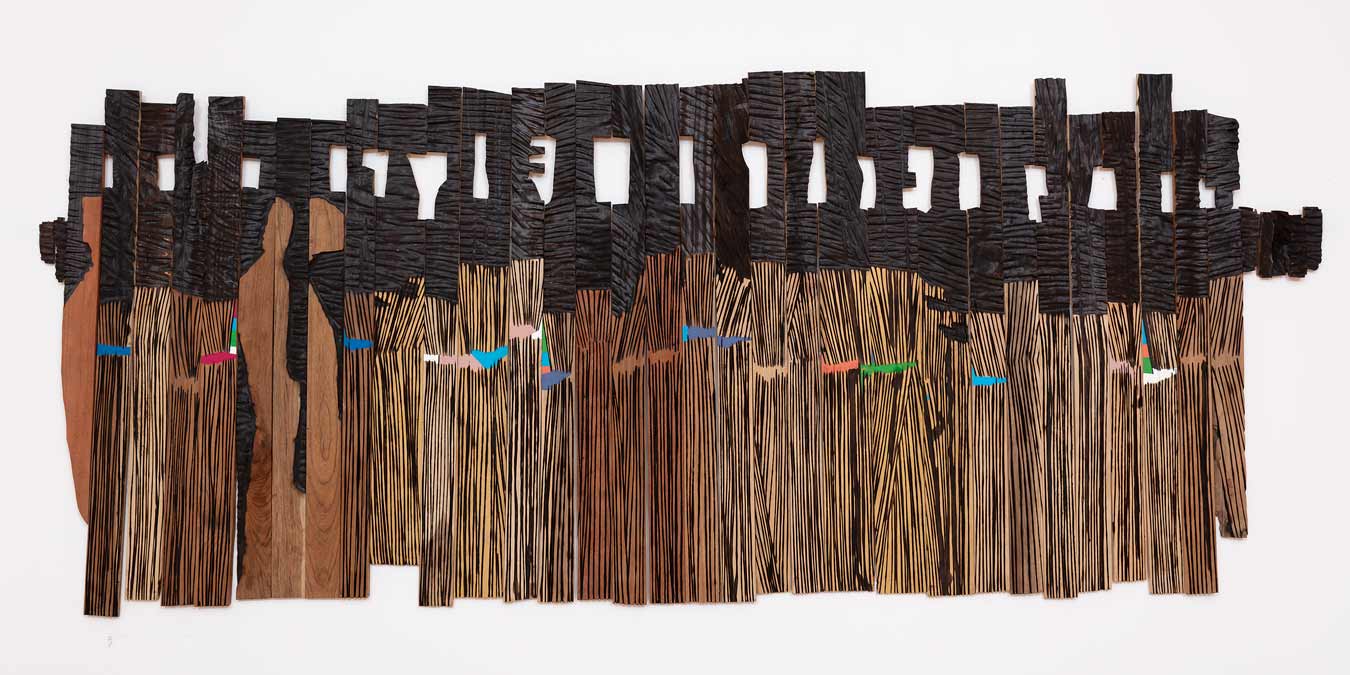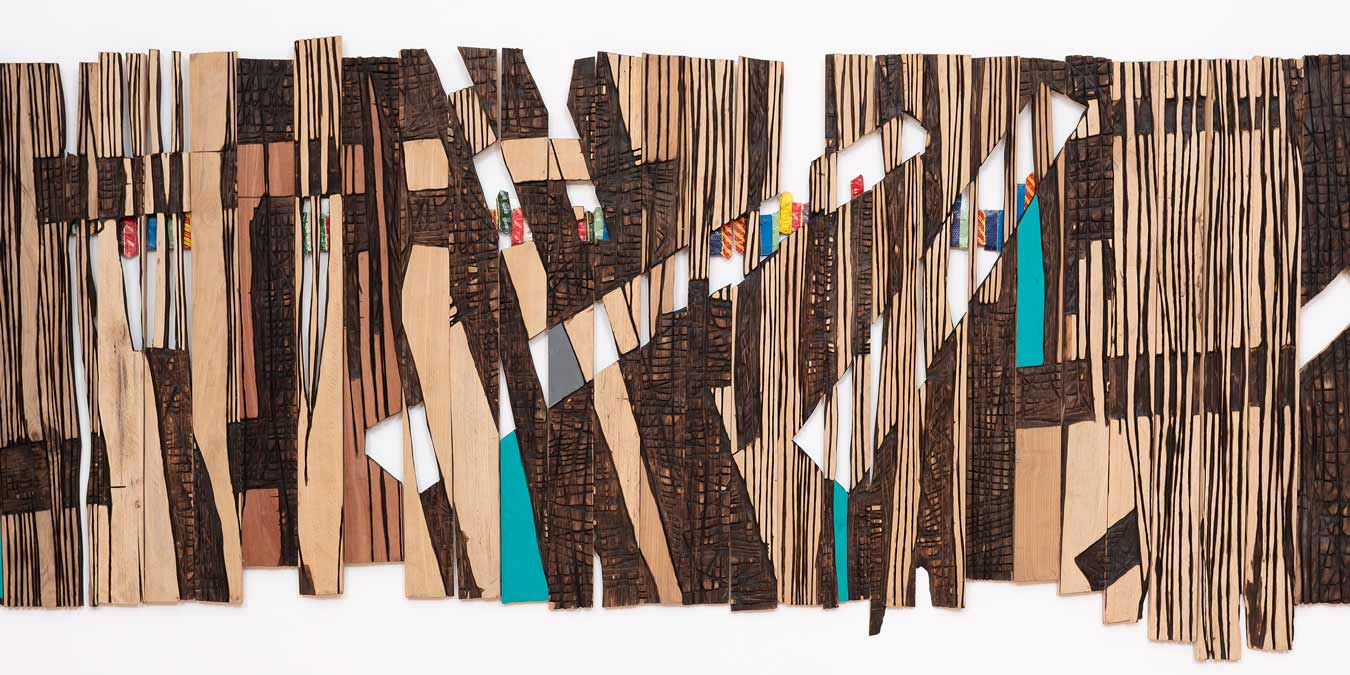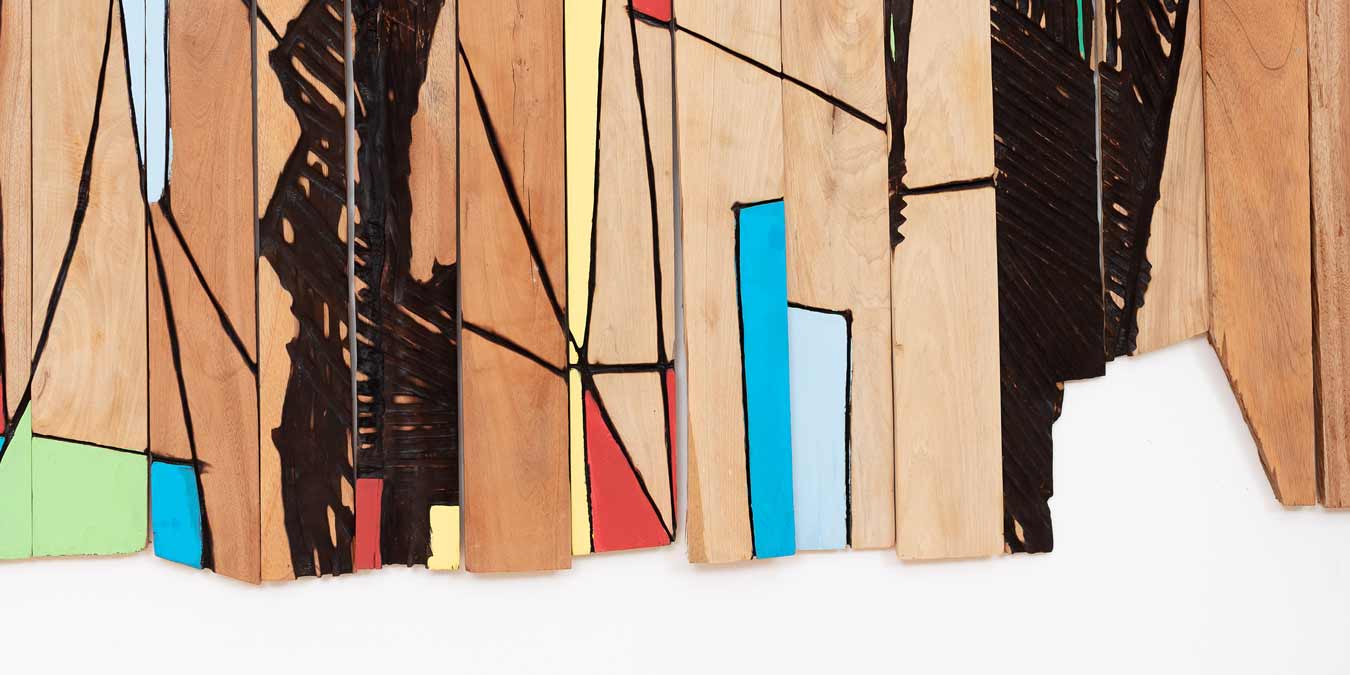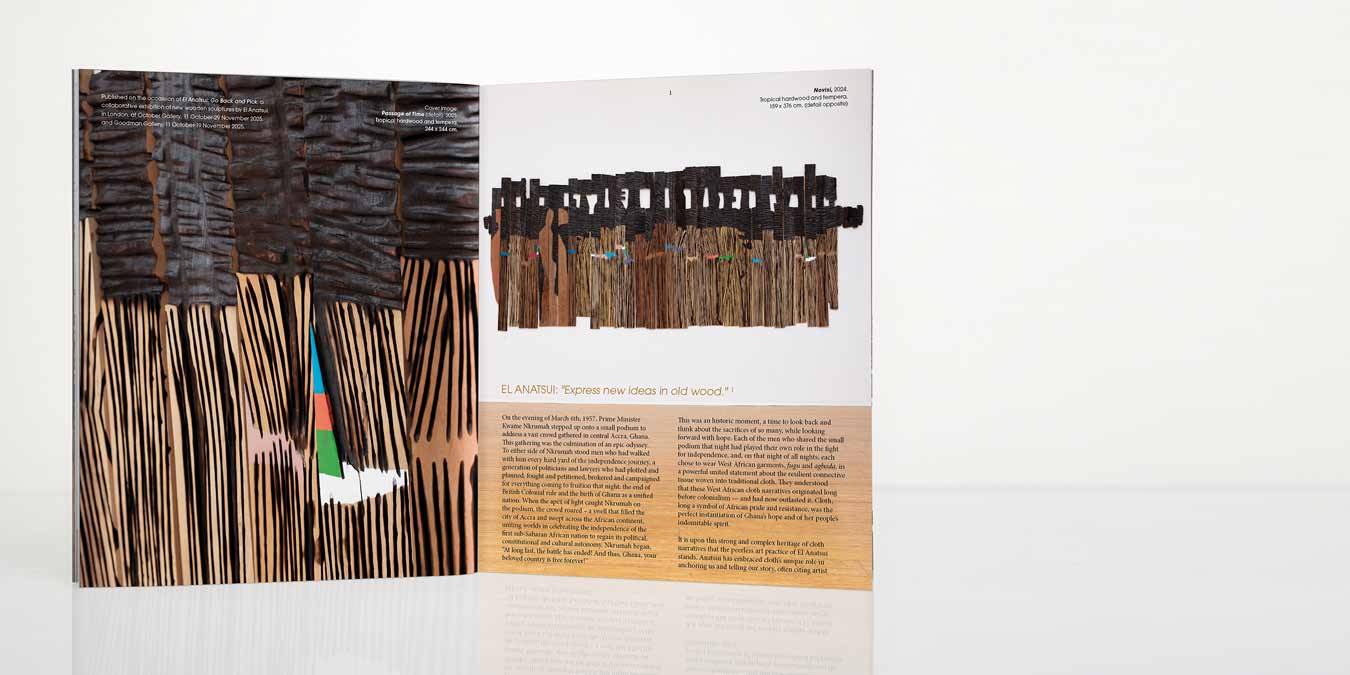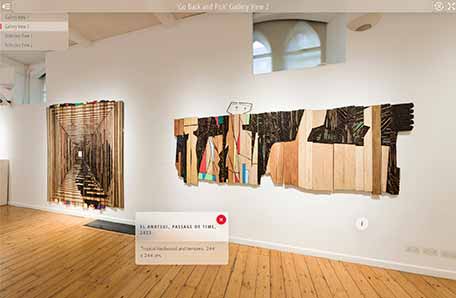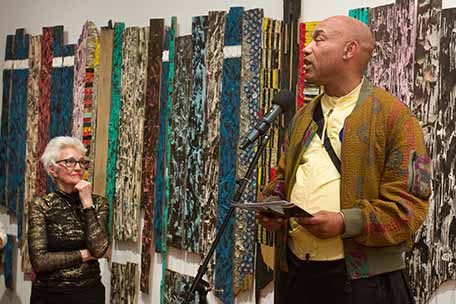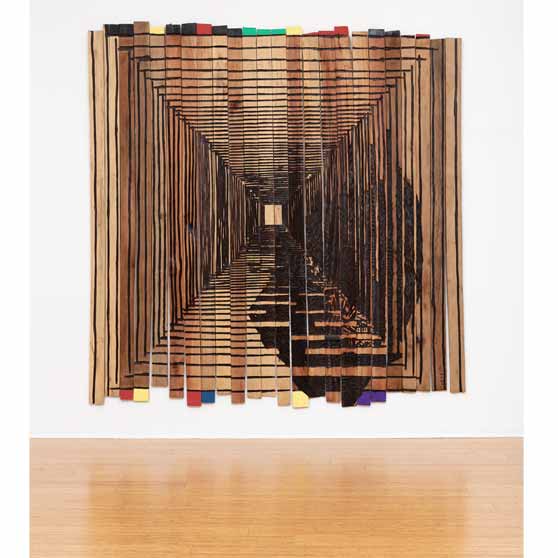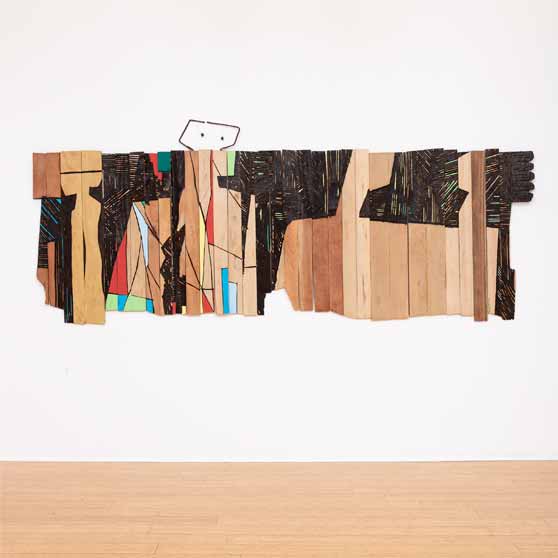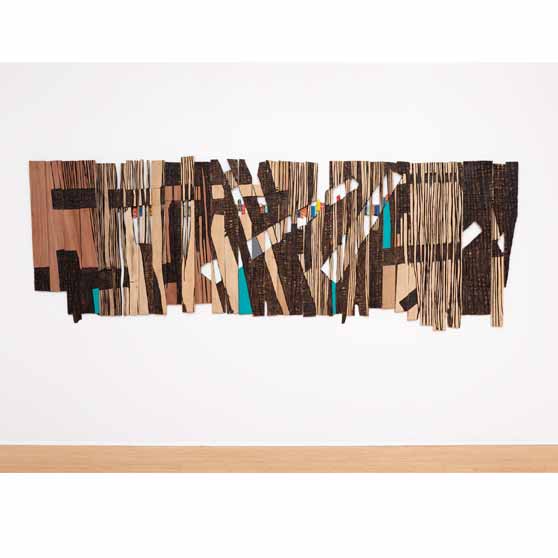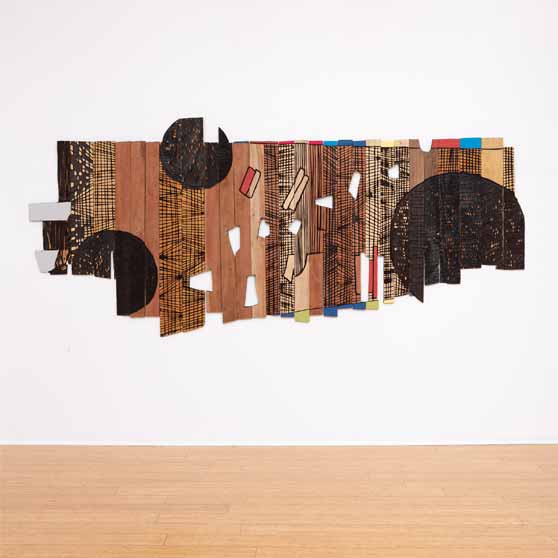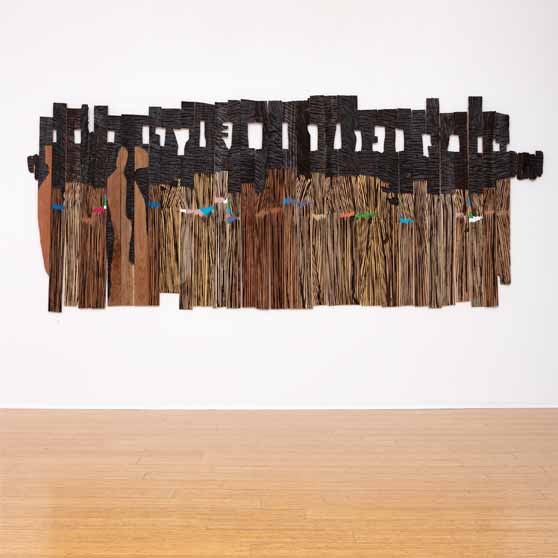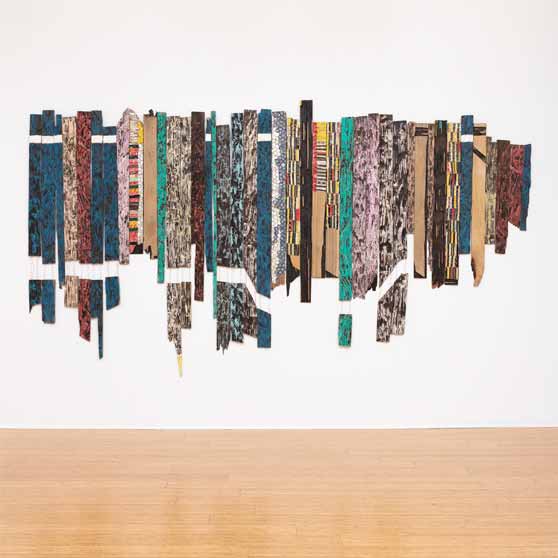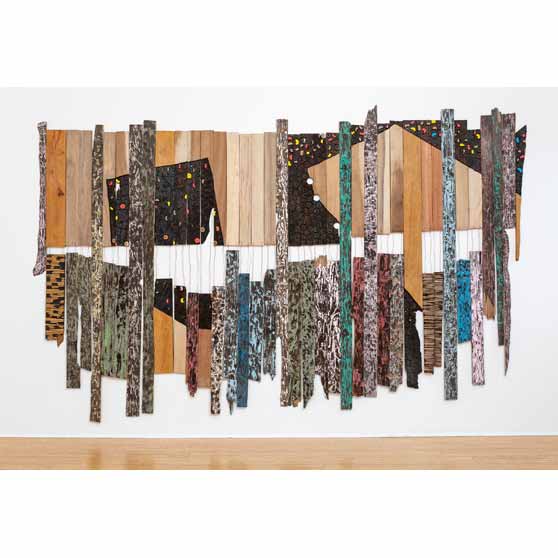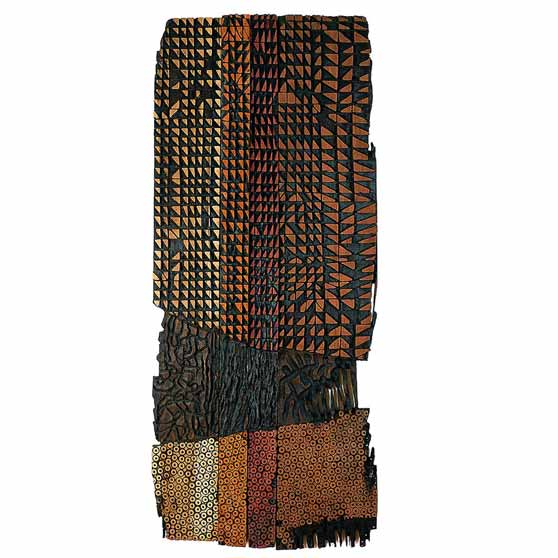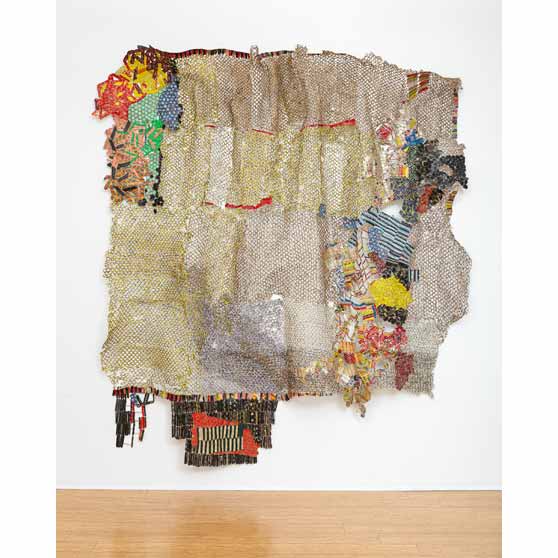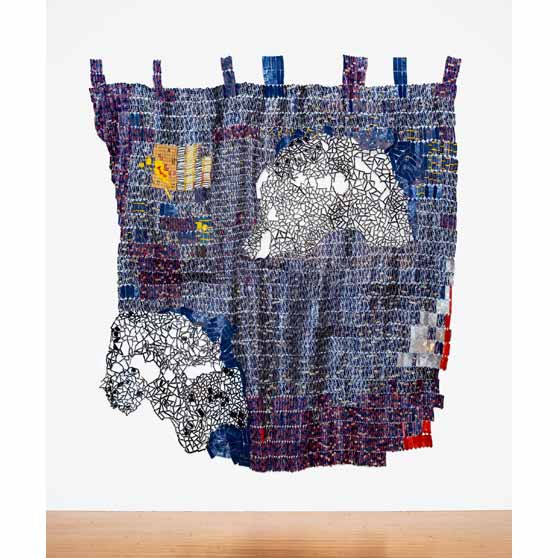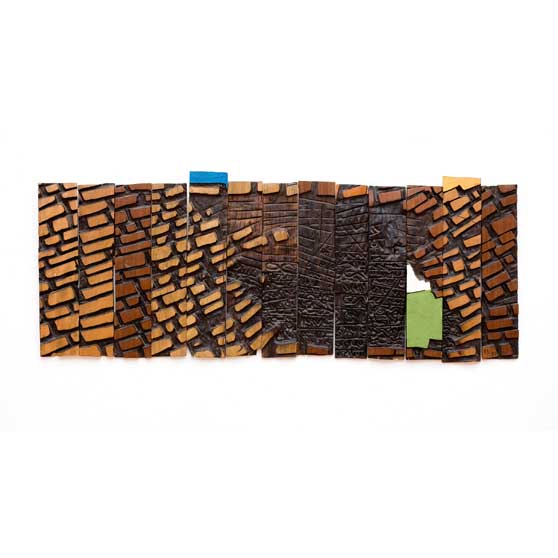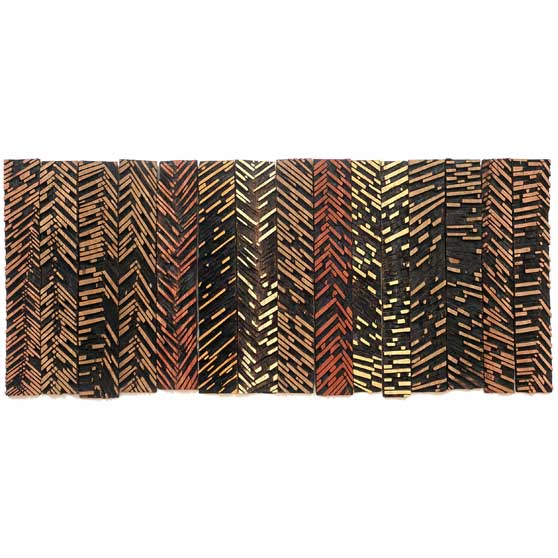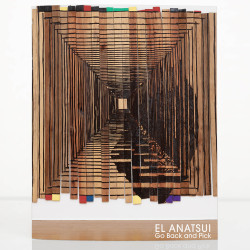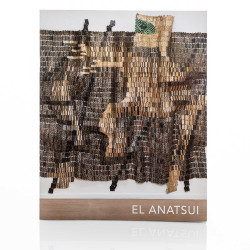EL ANATSUI: 'Go Back and Pick'
9 October – 29 November, 2025.
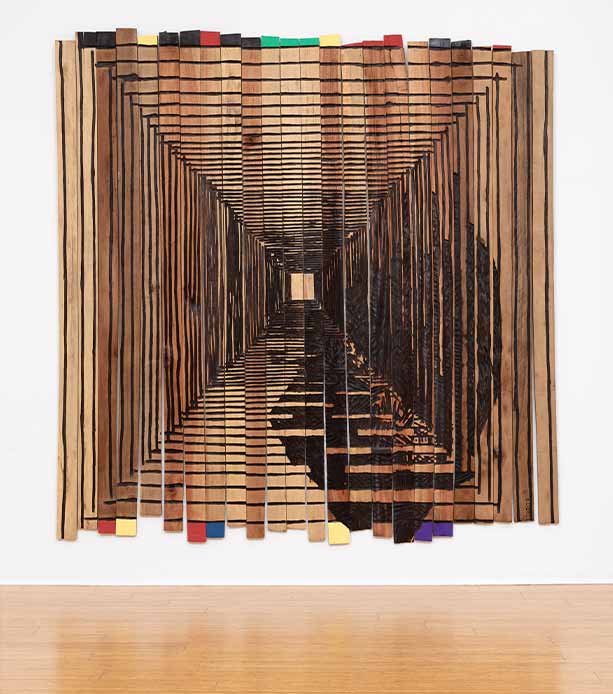
Tropical hardwood and tempera, 244 x 244 cm.
Photos: Jonathan Greet
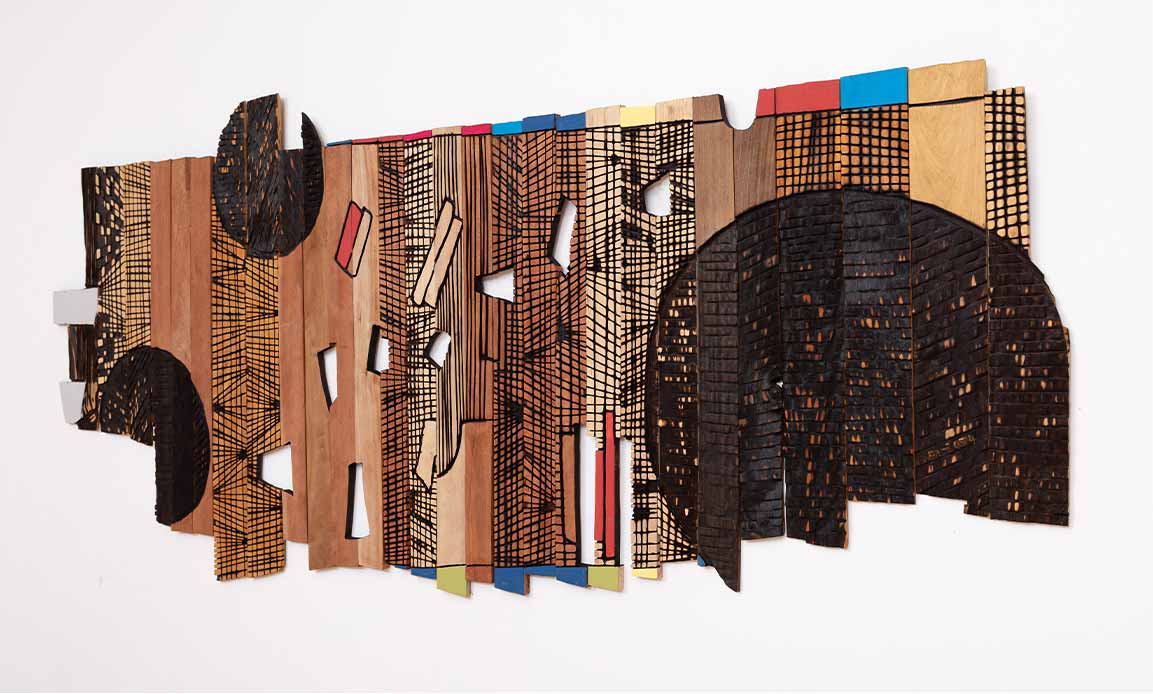
Tropical hardwood and tempera, 148 x 335 cm.
El Anatsui’s internationally renowned sculptural practice continues to challenge the way we look at sculpture today. In the London exhibitions, his focus is on wood, his original and primary material. ‘Go Back and Pick’ presents a new series of wall-mounted sculptures, which evolve from the planar wooden reliefs that characterised his art in the 1980s and 1990s.
To appreciate Anatsui’s extraordinary creative trajectory, one must consider the broader historical context post-Independence Ghana, and the emergent Sankofa movement from which the current exhibitions take their title. Sankofa is an Akan word, an Adinkra bird symbol from Ghana that exhorts the importance of learning from the past, reclaiming lost knowledge, and integrating these lessons into the present to build a stronger future. In 1969, when Anatsui graduated from the KNUST school of art in Kumasi, its teaching programme followed British curriculum and took no account of local arts traditions. In recognition of the need for a fresh visual language that responded to the important changes occurring locally, the Ghanaian doctrine of Sankofa promoteda return to African arts and sculptural traditions for inspiration. Leaving the materials of art school aside, in his early sculptural experiments Anatsui employed hand crafted wooden trays onto which he burned patterns and motifs sourced in Ghanaian culture, such as Adinkra symbols. His decision to step beyond his westernised art training sparked what he later called the ‘indigenisation of my practice.’
Leaving Ghana in 1975 to take up a teaching post in Nsukka, Nigeria, Anatsui was surrounded by a group of artists who were also exploring their own Nigerian traditions, different to his own. These cross-cultural influences revitalised his energies, and, for several years he concentrated on clay as his main medium. However, in 1980, while using a chainsaw during a U.S. residency – a eureka moment brought him back to wood as his primary material. From then until the new century dawned, Anatsui used power tools to cut, slice and carve into a range of wooden forms, developing a variety of new sculptural formats: from suspended wooden panels and weathered mortars masquerading as figures to evocative installations of scorched driftwood and haunting wall sculptures of salvaged timber from derelict houses.
Pushing his chosen material further, Anatsui began to pick out formal elements using natural earth and primary colours in tempera and acrylic paints. This fusion of pictographic colour and sculptural design elements came to define his signature style. Even when his attention became absorbed by the rapturous reception of his metal wall hangings, – first exhibited at October Gallery in London in 2002 – Anatsui continued to create sculptural reliefs in wood.
‘Go Back and Pick’ features Anatsui’s most recent wooden panel works, which mine this deep and fertile seam in his sculptural practice. From the outset, Anatsui has always insisted on what he calls “the non-fixed form”, the broad range of freedoms to be discovered in his sculpture. The modular nature and flexibility of the panel pieces allow for a range of spatially adaptive reconfigurations to the hanging sequence. Rather than having a fixed and final form, each panel piece can be rearranged at will to offer alternative combinations. As renowned scholars Okwui Enwezor and Chika Okeke-Agulu note, “the form-shape and surface-colour compositions are potentially free to be manipulated […] uninhibited by whatever might have been the artist’s original composition.”
The exhibition preview is kindly sponsored by the Future Plate



